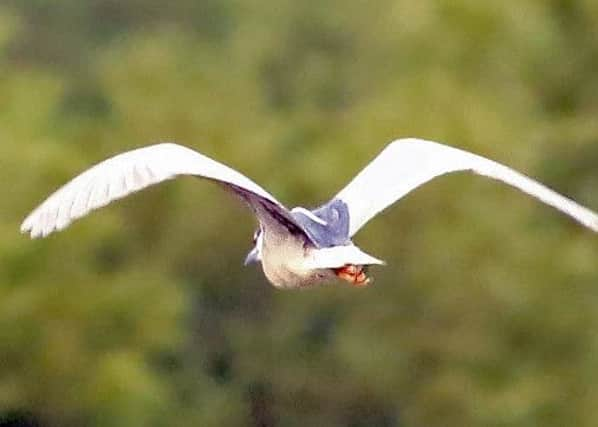Birdwatch: Top secret European gives fleeting show


The little bittern continues to be seen there and, last Friday it was joined by an adult night heron, photographed as it flew across the reserve from the Wath Ings to Wader Scrape hides before dropping out of sight.
It has not been seen again but, as the last night heron at Old Moor, a juvenile, was not seen again for three weeks after the first sighting in August 2013, this latest arrival is likely to be still on the reserve.
Advertisement
Hide AdAdvertisement
Hide AdIf so this means there are five heron species, grey, night, little bittern, bittern and little egret present with a record count at the weekend of 28 little egrets coming in to roost.
There have been a number of previous Yorkshire records including an adult and juvenile on the Fairburn Ings reserve in July 2007.
Night herons are very secretive and are mainly active at dusk and dawn spending the rest of the time roosting in dense trees or bushes. Adults are a smart-looking black and grey while juveniles have brown plumage flecked with white.
Elsewhere in the region a great white egret was seen at the North Cave Wetland, East Yorkshire and across the Humber at Alkborough Flats where three spoonbills were also reported.
Advertisement
Hide AdAdvertisement
Hide AdNow birders will be on the lookout to see if another European heron such as purple or squacco or a cattle egret turns up in the region.
All these birds migrate south to Africa for the winter starting as early as July and with such large movements it is inevitable that some arrive here each year.
Although it does not always feel like it our warmer climate, plus plenty of lush fenland in places such as the Somerset Levels, means that all these herons have now bred in this country and are likely to continue doing so.
Some storm petrel ringing has been taking place along the east coast with three, including one previously ringed bird, caught at Long Nab, north of Scarborough.
A storm petrel was seen on Monday flying past Filey Brigg.
Advertisement
Hide AdAdvertisement
Hide AdMore Manx plus Sooty and Balearic shearwaters have been seen by sea watchers at Spurn, Grimston and Flamborough while pomarine and long-tailed skuas have also been reported.
The adult white-rumped sandpiper was seen again at Beacon Ponds and on the Humber off the Warren at Spurn while there have also been one or two curlew sandpipers, a steady passage of whimbrels through the region and the first two purple sandpipers of the autumn on Filey Brigg.
A pectoral sandpiper was seen at Blacktoft Sands and sanderlings at a number of inland sites.
Montagu’s harriers are still showing well at Blacktoft Sands and the first merlin of the autumn has also been seen there while more short-eared owls are being reported both along the Yorkshire coast and inland with up to four in the Spurn area, others at Flamborough and Filey and two at Swillington Ings, Leeds this week.